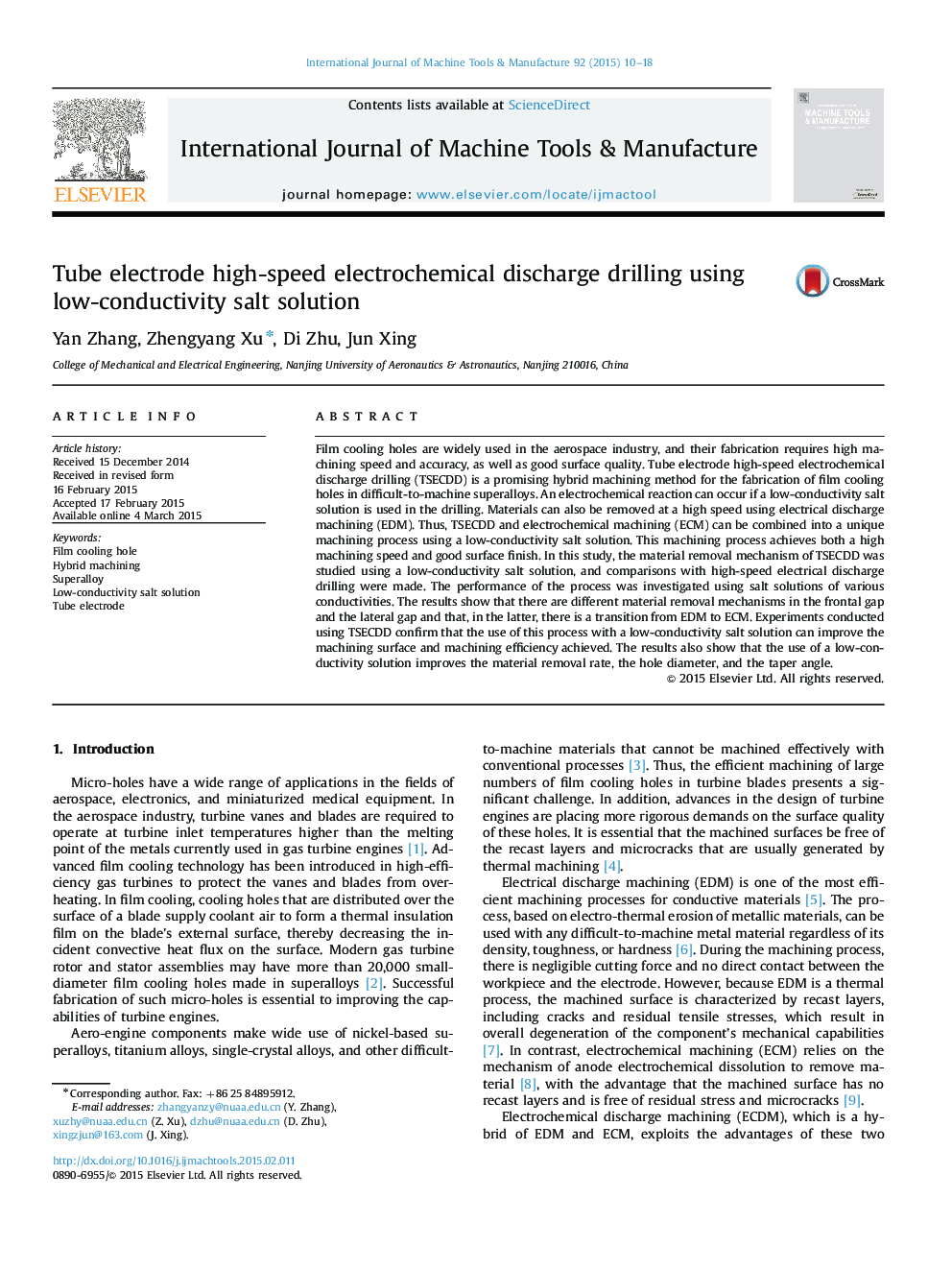| کد مقاله | کد نشریه | سال انتشار | مقاله انگلیسی | نسخه تمام متن |
|---|---|---|---|---|
| 780699 | 1464501 | 2015 | 9 صفحه PDF | دانلود رایگان |
• A Tube electrode high-speed electrochemical discharge drilling (TSECDD) is proposed.
• The material removal mechanism in TSECDD has been analysed.
• The comparison between TSECDD and other processes is presented.
• The TSECDD mechanism is confirmed using different salt solution conductivities.
• The effects of different conductivity salt solution on TSECDD performance are shown.
Film cooling holes are widely used in the aerospace industry, and their fabrication requires high machining speed and accuracy, as well as good surface quality. Tube electrode high-speed electrochemical discharge drilling (TSECDD) is a promising hybrid machining method for the fabrication of film cooling holes in difficult-to-machine superalloys. An electrochemical reaction can occur if a low-conductivity salt solution is used in the drilling. Materials can also be removed at a high speed using electrical discharge machining (EDM). Thus, TSECDD and electrochemical machining (ECM) can be combined into a unique machining process using a low-conductivity salt solution. This machining process achieves both a high machining speed and good surface finish. In this study, the material removal mechanism of TSECDD was studied using a low-conductivity salt solution, and comparisons with high-speed electrical discharge drilling were made. The performance of the process was investigated using salt solutions of various conductivities. The results show that there are different material removal mechanisms in the frontal gap and the lateral gap and that, in the latter, there is a transition from EDM to ECM. Experiments conducted using TSECDD confirm that the use of this process with a low-conductivity salt solution can improve the machining surface and machining efficiency achieved. The results also show that the use of a low-conductivity solution improves the material removal rate, the hole diameter, and the taper angle.
Journal: International Journal of Machine Tools and Manufacture - Volume 92, May 2015, Pages 10–18
